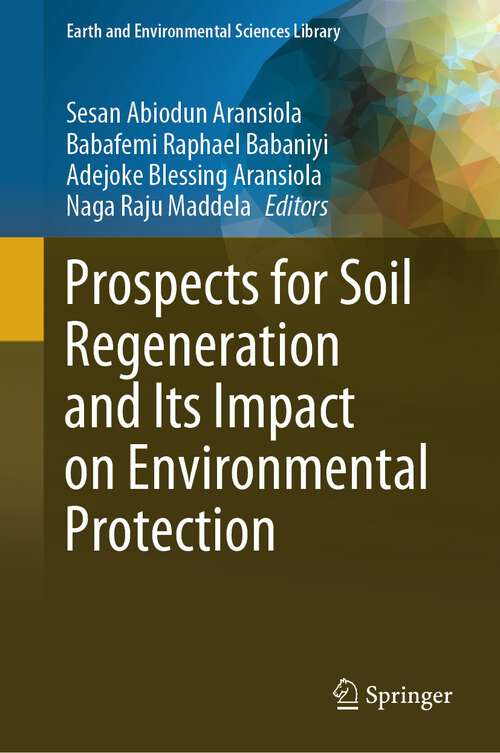Prospects for Soil Regeneration and Its Impact on Environmental Protection (2024) (Earth and Environmental Sciences Library)
By: and and and
Sign Up Now!
Already a Member? Log In
You must be logged into Bookshare to access this title.
Learn about membership options,
or view our freely available titles.
- Synopsis
- Soil is a complex system of inorganic and organic materials, living organisms, water, and air. It is home to more than one trillion species of microorganisms. Soil also plays an important role in the global carbon cycle. Because plants absorb carbon from the atmosphere, convert it to plant tissue, and return it to the soil as plant residue, soils globally act as the world’s largest sink of active carbon. Soil has role to play in food production and safety. Soil contamination undermined by modern agricultural practices that deplete soil carbon stocks. Anthropogenic greenhouse gas emissions have been raising recorded temperatures since the Industrial Revolution. Greenhouse gas emissions from agriculture, forestry, and fisheries have almost doubled in the last 50 years and will increase by 30% by 2050 given the current trend. The primacy of arresting climate change is nowhere more evident than the adoption of 195 countries of the first legally binding global climate deal at the Paris Climate Conference in 2015. With atmospheric carbon dioxide (CO2) reaching 400 parts per million in 2016, soils can be an ally in bringing the CO2 level down to a sustainable level if protected for regeneration. Soil protection and regeneration is a technique that involves the conservative rehabilitation of soil ecosystem and farmland. This technique focuses on top soil regeneration, improving the water cycle, supporting biosequestration, enhancing ecosystem services, increasing biodiversity, strengthening the vitality and health of farm soil, and increasing resilience to climate change and landscape. Environmental protection not only improves soil health, productivity, and resilience to weather extremes, raising farm yields and income while strengthening regional food security in the face of a changing climate, but can also form part of a region’s broader climate strategy. This book is timely as more studies and reviews need to be reported about regenerating global polluted soil and the impacts on the environment, the benefit of both biotic and abiotic structure, thereby creating more awareness of environmental protection and sustainability. Thus, this book presents a vista to research on regeneration of lost resources in the soil and its impacts on the environment.
- Copyright:
- 2024
Book Details
- Book Quality:
- Publisher Quality
- ISBN-13:
- 9783031532702
- Related ISBNs:
- 9783031532696
- Publisher:
- Springer Nature Switzerland
- Date of Addition:
- 03/22/24
- Copyrighted By:
- The Editor
- Adult content:
- No
- Language:
- English
- Has Image Descriptions:
- No
- Categories:
- Nonfiction, Science, Business and Finance, Technology, Medicine
- Submitted By:
- Bookshare Staff
- Usage Restrictions:
- This is a copyrighted book.
- Edited by:
- Sesan Abiodun Aransiola
- Edited by:
- Babafemi Raphael Babaniyi
- Edited by:
- Adejoke Blessing Aransiola
- Edited by:
- Naga Raju Maddela
Reviews
Other Books
- by Sesan Abiodun Aransiola
- by Babafemi Raphael Babaniyi
- by Adejoke Blessing Aransiola
- by Naga Raju Maddela
- in Nonfiction
- in Science
- in Business and Finance
- in Technology
- in Medicine
